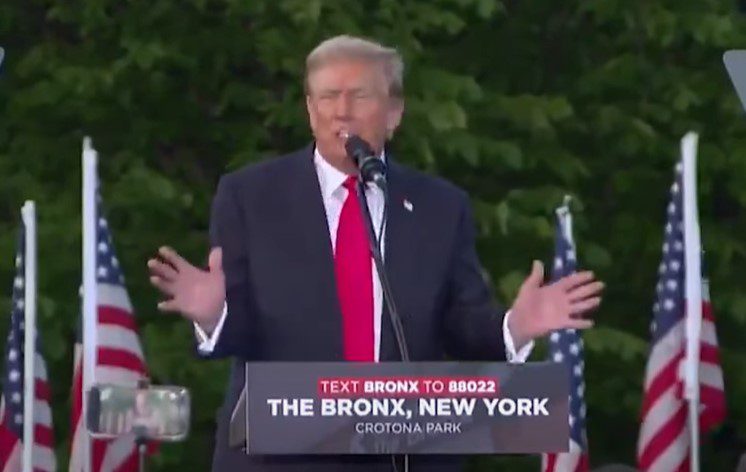In a historic political rally held in the Bronx, New York, a borough known for its staunch Democratic leanings, former President Donald Trump gathered a diverse crowd of supporters.

This event marked a significant moment as it drew an estimated 20,000 attendees, highlighting a shift in the demographic support base of the Republican Party.
Economic Concerns Highlighted at Trump Rally
The rally attendees expressed deep concerns about the current economic situation, emphasizing rising food and gas prices under the Biden administration.
Many voiced dissatisfaction with President Joe Biden’s handling of the economy, citing increased living costs and perceived neglect of the Bronx and New York City residents in favor of new migrants. The rally served as a platform for these voters to voice their frustrations, focusing on economic issues rather than racial politics.
Diverse Demographics at Trump’s Bronx Rally
Contrary to typical Trump rally demographics, the Bronx event saw a significant presence of Asian, Hispanic, and Black voters. This diverse turnout is not commonly observed in Trump’s rallies in other states like Wisconsin or Michigan, suggesting a strategic push to appeal to these key demographics ahead of upcoming elections.
Media Response to Trump’s Bronx Rally
The event also stirred significant media commentary, particularly from liberal outlets. Some commentators suggested that Trump’s Bronx rally aimed not at winning votes in New York but at softening his image among potential voters in swing states.
Critics argue that this move targets voters who are concerned about being perceived as supporting a racist agenda.
Voter Reactions and Media Narratives
Despite media criticisms focusing on racial issues, many attendees expressed that their support for Trump was based on his economic policies rather than racial rhetoric.
This sentiment was echoed by various voters who felt that economic issues were more pressing than the racial narratives often highlighted in the media.
Implications for Future Elections
The rally’s turnout and the diversity of the attendees may indicate shifting political loyalties among minority voters, historically a stronghold for the Democratic Party. This event could foreshadow changing dynamics in voter behavior, potentially impacting future elections.

















